
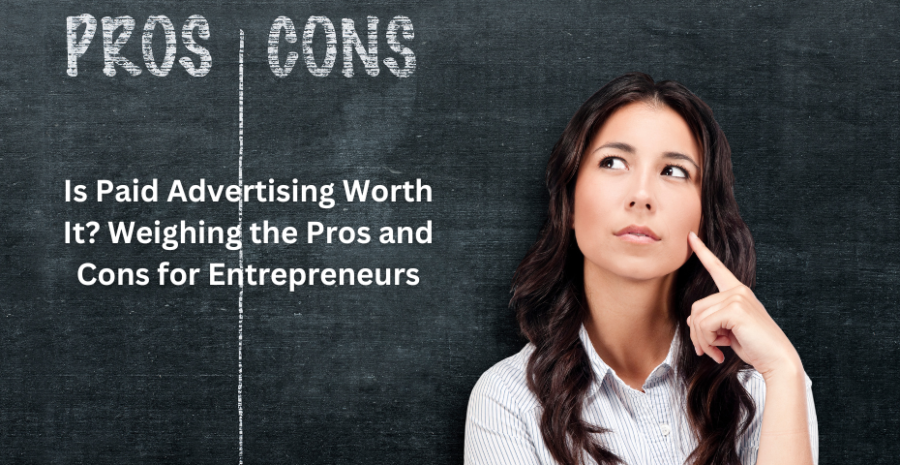
In today's highly competitive business landscape, entrepreneurs are constantly searching for effective ways to promote their products and services. Paid advertising has emerged as a powerful tool in the marketing arsenal, offering the potential to reach a vast audience, generate leads, and drive sales.
However, with the numerous advertising options available—ranging from social media ads and search engine marketing to display ads and sponsored content—entrepreneurs often find themselves questioning whether the investment in paid advertising is truly worth it.
On the one hand, paid advertising can provide immediate visibility and measurable results, making it an attractive option for businesses looking to scale quickly. On the other hand, the costs associated with paid advertising can be significant, and without a clear strategy, the return on investment (ROI) may not justify the expense.
This blog will explore the pros and cons of paid advertising for entrepreneurs, helping you make an informed decision about whether it's the right strategy for your business. By understanding the benefits and potential drawbacks, you can determine how to best allocate your marketing budget and maximize your chances of success.

One of the most significant advantages of paid advertising is the immediate visibility it offers. Unlike organic marketing strategies, which can take time to build momentum, paid ads can place your brand in front of your target audience almost instantly.
This is particularly beneficial for entrepreneurs who are launching a new product or service and need to create awareness quickly. Paid advertising platforms, such as As the Markethive Boost evolves it will become layered to the level you want it delivered (different prices to deliver via hashtags, keywords, most active, number of friends, etc. (But not via private navigation). Right now, the Boost allows you to put your post on every member’s News Feed for one flat fee for free members and a discounted fee for upgraded members.
Google Ads and Facebook Ads, allow you to target specific demographics, interests, and behaviors, ensuring that your ads reach the most relevant audience.
This targeted approach can lead to higher engagement rates and, ultimately, more conversions. For businesses looking to make a quick impact in a crowded market, the immediacy of paid advertising can be a game-changer, providing the visibility needed to stand out from the competition.
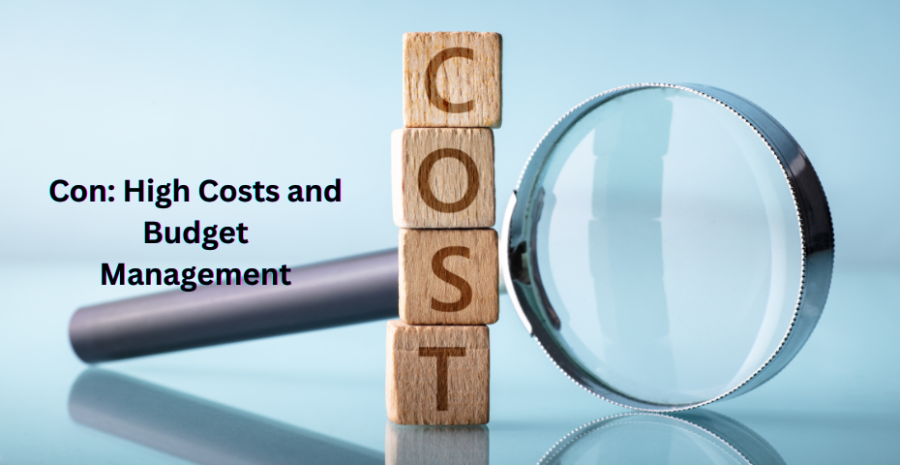
While the potential for immediate visibility is appealing, one of the major drawbacks of paid advertising is the cost. For entrepreneurs, especially those operating on a tight budget, the expenses associated with running paid ads can quickly add up.
Pay-per-click (PPC) campaigns, for instance, require a budget for each click on your ad, which can become expensive depending on the competitiveness of your keywords. Additionally, social media platforms often use bidding systems for ad placements, meaning that more popular audiences can drive up costs.
Without careful budget management, it's easy to overspend on advertising with little to show in terms of ROI. Entrepreneurs must be vigilant about setting clear budget limits and closely monitoring ad performance to ensure that the money invested in paid advertising is yielding positive results.
Otherwise, the high costs can quickly outweigh the benefits, leading to wasted resources.
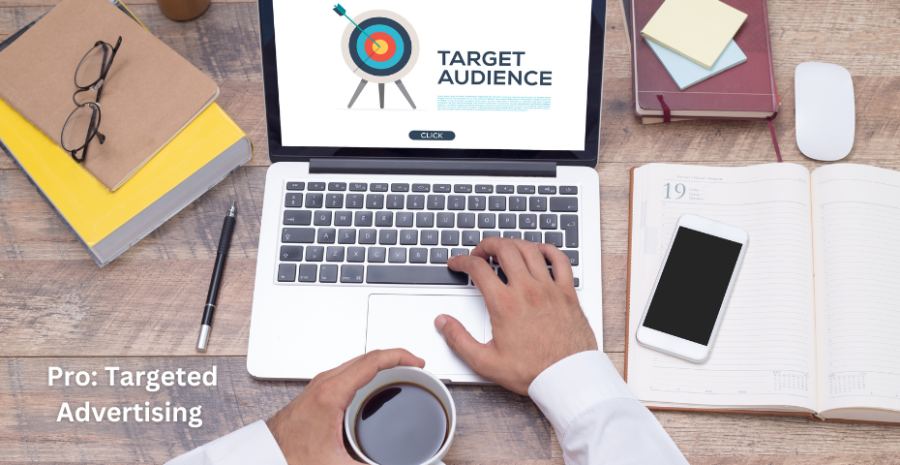
Paid advertising offers a level of precision that is difficult to achieve with organic marketing efforts. Through advanced targeting options, entrepreneurs can tailor their ads to specific audience segments based on demographics, location, interests, and even online behavior.
This ability to micro-target ensures that your ads are being seen by individuals who are most likely to be interested in your product or service, increasing the likelihood of conversions. For example, if you’re a local business, geo-targeting allows you to focus your ads on users within a specific radius of your location, maximizing the relevance of your campaigns.
This targeted approach not only improves the effectiveness of your advertising but also helps to minimize wasteful spending by ensuring that your budget is being used to reach the most appropriate audience. For entrepreneurs, the ability to deliver highly relevant ads to a well-defined audience is a significant advantage of paid advertising.
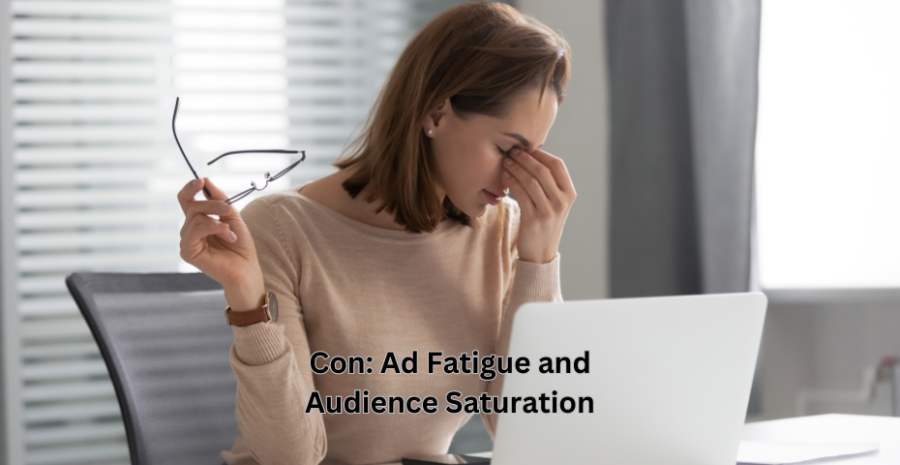
While targeted advertising can be highly effective, it also comes with the risk of ad fatigue and audience saturation. When the same audience is exposed to your ads repeatedly, they may begin to tune them out or develop a negative perception of your brand.
This phenomenon, known as ad fatigue, can lead to declining click-through rates and reduced effectiveness of your campaigns over time. Additionally, in highly competitive markets, the target audience may be saturated with ads from multiple businesses offering similar products or services, making it harder for your ads to stand out.
To combat ad fatigue, entrepreneurs need to continuously refresh their ad creatives, messaging, and targeting strategies. However, this requires additional time and resources, adding to the overall cost and complexity of managing paid advertising campaigns.
For entrepreneurs with limited resources, the risk of ad fatigue can make it challenging to sustain long-term success with paid advertising.

One of the key benefits of paid advertising is the ability to track and measure the performance of your campaigns in real-time. Most advertising platforms provide detailed analytics and reporting tools that allow you to monitor key metrics such as impressions, clicks, conversions, and ROI.
This data-driven approach enables entrepreneurs to make informed decisions about their advertising strategies, optimizing campaigns for better performance and higher returns. For instance, if a particular ad is underperforming, you can quickly identify the issue—whether it's the ad creative, targeting, or bidding strategy—and make adjustments to improve results.
The transparency and measurability of paid advertising give entrepreneurs the confidence to invest in their campaigns, knowing that they can track their progress and make data-driven decisions to maximize their ROI.
This level of insight is invaluable for refining your marketing efforts and ensuring that your advertising dollars are being spent effectively.

While the ability to measure and optimize campaigns is a significant advantage, the complexity of paid advertising platforms can be a major drawback, especially for entrepreneurs who are new to digital marketing.
Platforms like Google Ads and Facebook Ads come with a steep learning curve, requiring a deep understanding of bidding strategies, targeting options, ad formats, and analytics. Navigating these platforms effectively can be challenging, and without the right expertise, it's easy to make costly mistakes.
For example, setting up a PPC campaign with poorly chosen keywords or incorrect bidding strategies can result in high costs with little to no return. Entrepreneurs may find themselves spending more time and money than anticipated trying to master these platforms, potentially diverting attention away from other critical aspects of their business.
While hiring a digital marketing expert or agency can help mitigate this challenge, it also adds to the overall cost of paid advertising, further complicating the decision-making process.

Paid advertising offers a high degree of flexibility and scalability, making it an attractive option for entrepreneurs who need to adapt quickly to changing market conditions.
Unlike traditional advertising methods, which often require long-term commitments and significant upfront costs, digital paid advertising allows you to set your own budget, adjust your bids, and change your ad creatives at any time. This flexibility enables you to test different strategies, optimize your campaigns, and scale your efforts based on what’s working.
For instance, if you notice that a particular ad is driving a high volume of conversions, you can quickly allocate more budget to that campaign to capitalize on its success.
Conversely, if an ad is underperforming, you can pause it or reallocate resources to more effective campaigns. The ability to scale your advertising efforts up or down as needed provides entrepreneurs with the agility to respond to market demands and maximize their ROI.
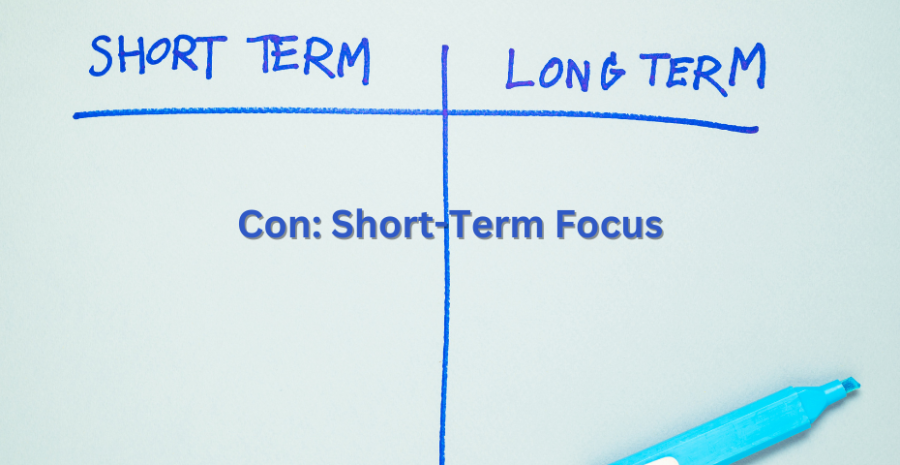
While the immediate results of paid advertising are appealing, it often fosters a short-term focus that can be detrimental to long-term business success.
Because paid ads provide quick visibility and traffic, entrepreneurs may become overly reliant on them, neglecting other important aspects of their marketing strategy, such as building an organic presence through SEO, content marketing, and social media engagement.
This short-term focus can lead to unsustainable business practices, where continuous spending on ads becomes necessary to maintain visibility and sales. Additionally, once the ad spend stops, the traffic and leads generated by paid ads can quickly diminish, leaving entrepreneurs with little to show for their investment.
To achieve long-term success, it's crucial for entrepreneurs to balance paid advertising with efforts to build a strong, organic presence that can sustain their business even when ad spend is reduced.

In a crowded marketplace, gaining a competitive edge is essential for success, and paid advertising can provide that edge by allowing entrepreneurs to quickly and effectively reach their target audience.
When done correctly, paid advertising can position your brand ahead of competitors, especially if they are not investing in paid channels or are not utilizing them effectively.
For example, by bidding on strategic keywords related to your industry, you can appear at the top of search engine results, capturing potential customers before they even see your competitors' organic listings. Similarly, targeted social media ads can help you engage with your audience in ways that organic posts might not reach.
This ability to outmaneuver competitors and capture market share is one of the key reasons many entrepreneurs turn to paid advertising as part of their marketing strategy. By leveraging paid ads, you can ensure that your brand stays top of mind with your target audience, giving you an advantage in competitive markets.
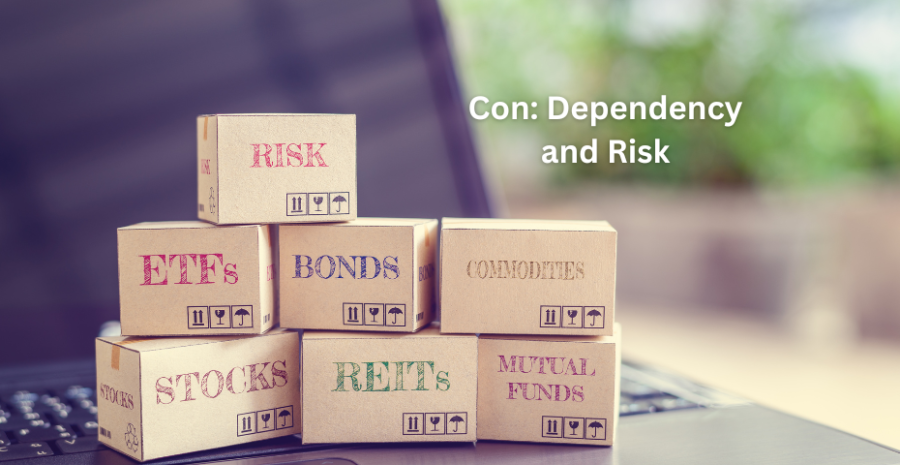
One of the biggest risks associated with paid advertising is the potential for dependency. Entrepreneurs who rely too heavily on paid ads for traffic and sales may find themselves in a precarious position if their ad campaigns become less effective or if they experience budget constraints.
This dependency can create a cycle where more and more money is needed to maintain the same level of visibility and sales, leading to diminishing returns over time. Additionally, changes in advertising platform algorithms, increased competition, or shifts in consumer behavior can all impact the effectiveness of your paid campaigns, making it difficult to predict and maintain consistent results.
To mitigate this risk, it's important for entrepreneurs to diversify their marketing efforts, investing in a mix of paid, organic, and earned media strategies. By building a well-rounded marketing strategy, you can reduce your reliance on paid ads and create a more sustainable path to business growth.
Paid advertising offers entrepreneurs a powerful tool to quickly reach their target audience, drive traffic, and generate leads. However, it also comes with significant costs, a steep learning curve, and the risk of dependency.
The decision to invest in paid advertising should be carefully considered, weighing the immediate benefits of visibility and reach against the potential drawbacks of high costs, ad fatigue, and a short-term focus.
For entrepreneurs, the key to success lies in balancing paid advertising with other marketing efforts, such as building an organic presence and fostering long-term customer relationships. By understanding both the pros and cons of paid advertising, you can make informed decisions that align with your business goals, ensuring that your marketing budget is used effectively.
Ultimately, while paid advertising can provide a competitive edge and immediate results, it should be part of a broader, diversified marketing strategy that supports sustainable growth and long-term success.
(13).png)
About: Andries vanTonder (65)
45 years selfemployed
He is a Serial Entrepreneur, an Enthusiastic supporter of Blockchain Technology and a Cryptocurrency Investor
Find me: Markethive Profile Page | My Twitter Account | My Instagram Acount | and my Facebook Profile.
